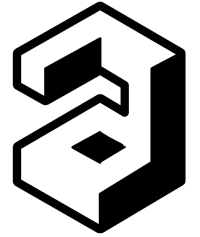Vol 13, No 2 (2021)
Published: 15.12.2021.
Authors in this issue:
Ali Fakourian, Bülent O. Miçooğullari, David J. Edwards, Eliana R. Meza-Miranda, Frédéric Martineau, Giovanni Lombardi, Iman Khakroo Abkenar, Jazmín Giménez, Marko Manojlović, Masoud Kashfi, Rıdvan Ekmekçi, Romain Roult,
Edited by:
Danilo Radanović
Author guidelines
Editorial Policy
35
Issues213
ArticlesBECOME A REVIEWER
We invite you to become an Exercise and Quality of Life reviewer.
BECOME GUEST EDITOR
Exercise and Quality of Life runs special issues to create collections of papers on specific topics.
Archive
See all
Volume 18, Issue 1, 2026
Volume 17, Issue 2, 2025
Volume 17, Issue 1, 2025
Volume 16, Issue 3, 2024
15.12.2021.
Original scientific paper
Level of physical activity and quality of life associated with health in Paraguay adults
Studies have shown that the performance of scheduled physical activity is positively related to a higher quality of life related to health. The objective of this study was to evaluate the level of physical activity according to the quality of life in the adult population of Paraguay in the period from November to December 2020. A descriptive, analytical cross-sectional design study, which included 211 adults of both sexes. Sociodemographic data such as age, sex and origin were collected, as well as data on physical activity (IPAQ/METS questionnaire) and quality of life (EuroQol-5D questionnaire). The predominant sex was female (89%), 53.5% resided in Gran Asunción and the average age was 34.6±10.6. The level of physical activity was mostly moderate (36.5%). The quality of life index was 0.67±0.15 and the perception of health was 79.12±18.35. Within the dimensions of quality of life, it was observed that 23% had moderate pain or discomfort and that 33% had moderate depression or anxiety. Significant differences were found between the level of physical activity and the quality of life index and the perception of health. The level of physical activity is a determinant of health-related quality of life, the greater the intensity of physical activity, the better the quality and perception of health indices in adults.
Eliana R. Meza-Miranda, Jazmín Giménez
15.12.2021.
Original scientific paper
Psychometric properties of Bull’s Mental Skills Questionnaire in a Turkish population
The purpose of this research was to examine the reliability and validity of Bull’s Mental Skills Questionnaire (BMSQ), measuring seven psychological skills resulting in a total scale score, within Turkey. The sample consisting of 163 males and 131 females, totaling 294 athletes, completed the 28 item BMSQ. Exploratory factor analysis (EFA) and confirmatory factor analysis (CFA) were undertaken. EFA results yielded a satisfactory seven-factor solution, the same as the English version. Cronbach alpha (α) reliability indices were as follows: concentration ability (0.71), anxiety and worry management (0.63), relaxation ability (0.69), imagery ability (0.73), self-confidence (0.72), motivation (0.64) and mental preparation (0.52). The BMSQ explained 62% of the total variance. Moreover, model fit indices calculated during CFA for the 28 item and 7 sub-dimensions model of BMSQ indicated an acceptable fit [Chi-Square (ꭓ²)=541.2, df=328, ꭓ²/df=1.65, Root Mean Square Error Approximation (RMSEA)=0.05, Comparative Fit Index (CFI)=0.95, Goodness of Fit Index (GFI)=0.90, Normed Fit Index (NFI)=0.89, and Non Normed Fit Index (NNFI)=0.90]. Thus, the original 7-factor solution was supported with the data collected from Turkish participants. Results demonstrated that the BMSQ is a valid and reliable instrument for the Turkish population.
Bülent O. Miçooğullari, David J. Edwards, Rıdvan Ekmekçi
15.12.2021.
Original scientific paper
Effectiveness of exercise training program on postural control and quality of life in middle-aged men with unilateral lower limb amputation
This study aimed to investigate whether the exercise-based amputee rehabilitation program improves postural control and quality of life in people with unilateral transtibial amputation (TTA). Twenty middle-aged men (48.4±3.8 y) with lower limb amputation, in a randomized-controlled longitudinal design, volunteered to participate in the study and were divided into experimental (EXP, n=10) and control (CON, n=10) groups. Before and after 8 weeks of the exercise training program, postural control performance, using one-leg standing (OLS) and Y-balance tests, was measured. The quality of life was also assessed before and after 8 weeks training period using standard questionnaires. Group x time interactions were observed for the EXP group in OLS and Y-balance tests and quality of life scores in comparison to pre- training values and the CON group (p<0.05). People with unilateral TTA who received exercise-based amputee rehabilitation program demonstrated significant improvement in balance performance with significant effects on quality of life.
Masoud Kashfi, Iman Khakroo Abkenar, Ali Fakourian, Giovanni Lombardi
15.12.2021.
Review scientific paper
The efficiency of proprioceptive training in preventing injuries to team athletes: A systematic review
The aim of this systematic review was to evaluate the effectiveness of proprioceptive training in the prevention of lower extremity injuries, especially the ankle and knee joint, in team athletes. PRISMA recommendations were applied for this research. PubMed, ScienceDirect, and BioMed Central were used to identify relevant studies. The methodological quality of studies was assessed using the Physiotherapy Evidence Database-PEDro scale. Only 7 research met the eligibility criteria, and their outcomes were presented. Proprioceptive training has been shown to be very effective in preventing ankle injuries, especially in recurrent ankle sprains. However, in 3 of 4 studies lacked the effects of proprioceptive training in the prevention of knee and ACL injuries. Based on the results of the analyzed research, I can conclude that proprioceptive training is a very effective training tool in the prevention of ankle sprains in the population of team athletes, but proprioceptive training is not sufficient as the only training component in preventing knee injuries.
Marko Manojlović
15.12.2021.
Original scientific paper
Flowart, a physical activity at the level of hypermodernity, even hypomodernity
Our current hypermodern era, as described by many authors, imposes frenzied rhythms of life on individuals exacerbated by new communication technologies. In this incessant tumult, it has become more and more difficult for humans to take time for themselves or even a moment to reflect on their daily lives. It therefore seems necessary for some to indulge in more contemplative and meditative leisure and sporting activities that reconnect with the principles of otium and thus fall into a form of hypomodernity. It is in this reflective context that this study was conducted to interview seven flowart practitioners using a qualitative approach. Halfway between artistic practice and physical activity, flowart seems to allow these individuals to reconnect with a rhythm of life that is more biological than digital. These participants see a way to slow down the frenzy of their daily life in this practice while becoming more aware of their place in a cosmic and metaphysical whole.
Romain Roult, Frédéric Martineau

























